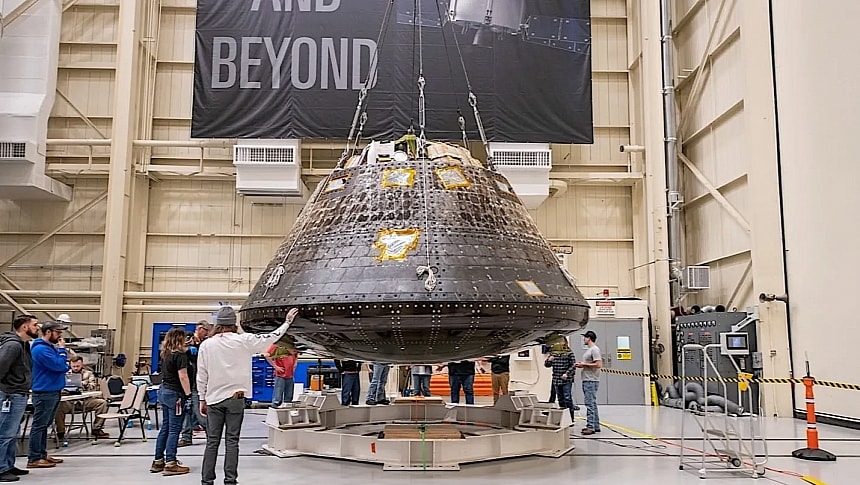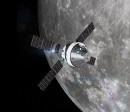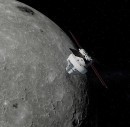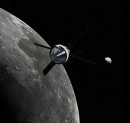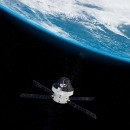In early 2024, NASA announced that it would postpone the launch of the Artemis II mission to the Moon. Initially scheduled to take off at the end of this year, the mission was pushed to late 2025 because of unspecified issues that have to do with the safety of the crew.
The complexity of the flight makes the postponement somewhat understandable, as the space agency needs to make sure nothing bad happens and the second Moon exploration program of our species can go ahead as imagined.
And NASA isn't wasting any time, working on all fronts to be ready for the second mission of the program, and the first crewed one. And one of these fronts has to do with the single flight of the Artemis program completed so far.
Launched at the end of 2022, Artemis I saw the first use of the Space Launch System (SLS) rocket and the Orion spacecraft. Uncrewed, the flight unfolded pretty much flawlessly, with the spacecraft returning to Earth more than 25 days after it left it.
The Orion that flew as part of Artemis I became an object of study for NASA's crews after it was recovered from the ocean. Now known to those involved in studying it as the Environmental Test Article, the ship has made a home for itself at the Neil Armstrong Test Facility in Sandusky, Ohio, where it is still being put through its paces in a bid to learn more about the requirements and safety of a crewed flight to the Moon and back.
The agency is now knee-deep in something called ground testing, with the Artemis I Orion at the center of it all. That means procedures that are "crucial to the safety and success of Artemis II."
More to the point, NASA, with help from partner Lockheed Martin, is trying to see how the ship will protect its occupants against unexpected events. To do that, the Orion will have to endure quite the ordeal over the next eight months or so.
The focus falls on launch abort procedures and protections. Among other things, the Orion spacecraft will be subjected to simulated lightning strikes, but also abort-level noise that will reach 160 decibels, more than a jackhammer going all in.
Separately, the ship's docking and shielding covers will be deployed to test their effectiveness, as will the crew module uprighting system and the five airbags the ship is fitted with for a softer splashdown.
Artemis II will take off in 2025 with four people on board, including the first person of color, the first Canadian, and the first woman to travel to the Moon. They will not land, but they will become the people who have traveled the farthest from our planet, as Orion will take them during the 10-day mission to a distance of 230,000 miles (370,000 km) beyond the far side of the Moon.
And NASA isn't wasting any time, working on all fronts to be ready for the second mission of the program, and the first crewed one. And one of these fronts has to do with the single flight of the Artemis program completed so far.
Launched at the end of 2022, Artemis I saw the first use of the Space Launch System (SLS) rocket and the Orion spacecraft. Uncrewed, the flight unfolded pretty much flawlessly, with the spacecraft returning to Earth more than 25 days after it left it.
The Orion that flew as part of Artemis I became an object of study for NASA's crews after it was recovered from the ocean. Now known to those involved in studying it as the Environmental Test Article, the ship has made a home for itself at the Neil Armstrong Test Facility in Sandusky, Ohio, where it is still being put through its paces in a bid to learn more about the requirements and safety of a crewed flight to the Moon and back.
The agency is now knee-deep in something called ground testing, with the Artemis I Orion at the center of it all. That means procedures that are "crucial to the safety and success of Artemis II."
More to the point, NASA, with help from partner Lockheed Martin, is trying to see how the ship will protect its occupants against unexpected events. To do that, the Orion will have to endure quite the ordeal over the next eight months or so.
The focus falls on launch abort procedures and protections. Among other things, the Orion spacecraft will be subjected to simulated lightning strikes, but also abort-level noise that will reach 160 decibels, more than a jackhammer going all in.
Separately, the ship's docking and shielding covers will be deployed to test their effectiveness, as will the crew module uprighting system and the five airbags the ship is fitted with for a softer splashdown.
Artemis II will take off in 2025 with four people on board, including the first person of color, the first Canadian, and the first woman to travel to the Moon. They will not land, but they will become the people who have traveled the farthest from our planet, as Orion will take them during the 10-day mission to a distance of 230,000 miles (370,000 km) beyond the far side of the Moon.
